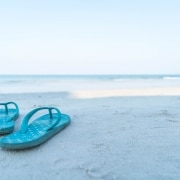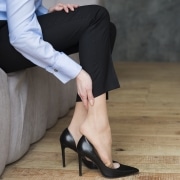Your feet serve you well, carrying you where you need to go, all while bearing the entire weight of your body. It’s a tall order and these relatively small body parts are usually up to the task. If you hinder their function in any way, however, you run the risk of creating painful foot and ankle problems.
The better option is to provide critical support for your beleaguered feet in the form of good footwear that’s an asset rather than a liability. At Family Foot & Ankle, we aim to help our patients in Pflugerville and Austin, Texas, take the best care of their feet and that means choosing the right shoes.
Here are 10 shoe shopping tips that will keep your feet happily skipping along.
1. Take it down a notch
If you’re a woman, you probably guessed that we need to address the elephant, or the heel, in the room. High heels are bad for your feet and ankles, and there’s no getting around that. Since we know that fashion wins out more often than it should, we advise you to choose your heels wisely. Opt for heels that have a wedge shape to them and a raised platform at the toe. Wedges are far more sturdy than stilettos, and the platform at the toe gives you the height you want without the added pressure on the balls of your feet.
2. Size matters
It may seem obvious, but when you go shoe shopping, make sure the shoe is the proper size for your feet. While you may have been a 6 a few years ago, you could now be a 7 (not to mention different manufacturers may size shoes differently). Better yet, go to a shoe store that still measures your feet to be sure. And be sure to measure both feet, since one may be slightly larger than the other.
3. A little breathing room
While those pointy shoes may add just the look you want, they’re incredibly bad for your feet. These shoes can lead to metatarsalgia (pain in the ball of your foot), hammertoes, and neuroma, a painful nerve inflammation between your toes. Opt instead for a shoe with a wider toe box, allowing your toes to spread out and do their job. In fact, the rule of thumb is that you should have at least a ¼-inch space between the end of your toes and the shoe.
4. Leave flip flops for the beach
Flip flops are easy to throw on and run around in, but these shoes provide little in the way of arch support, and they’re highly unstable. We see many ankle injuries in people who wear flip flops at inappropriate times.
5. The right tool for the job
It’s important that you chose the right footwear for the activity you’re engaged in. Hiking out on a trail in treadless street shoes can be a recipe for disaster. Make sure that your shoes match your activities in terms of tread, support, purpose, and coverage.
6. Try it out
When you go shopping, walk around in the shoe as much as you can. Designer warehouses provide ample room with carpeted floors, but you’ll have more difficulty in a smaller shop. Still, the more you wear the shoe, the more you can determine how well it fits. You’d be surprised to find how many shoes start to pinch or hurt when you take them for a real spin.
7. Timing and preparation matter
If it’s the middle of the summer, and you’re shopping for hiking boots while wearing sandals, plan ahead and bring along the socks you would use for the shoe you’re shopping for. As well, avoid shoe shopping first thing in the morning. As you go about your day, your feet expand, so try and do your shopping in the afternoon.
8. Attention to detail
While the shoe you want may look great on the outside, it’s the inside that matters when it comes to your feet. Check and make sure that there aren’t any seams or hardware that might irritate your feet.
9. Be sensible
It used to be that sensible shoes were ugly shoes. That’s no longer the case, as shoe manufacturers are answering the call for fashionable and comfortable shoes. So, even though it’s a brand your mother wore, take another look — you might be pleasantly surprised.
10. Get help
To maximize just about any shoe, custom orthotics can make good shoes even better by providing support where you need it most, from your arches to your ankle. At Family Foot & Ankle, we offer thin custom orthotics that are crafted to fit your feet in most any shoe you want to wear. With custom orthotics, your shoe options may even get broader.
To learn more about finding the right shoes for your feet, feel free to call us at Family Foot & Ankle, or book an appointment online.






